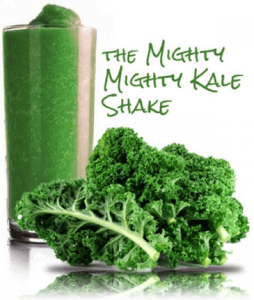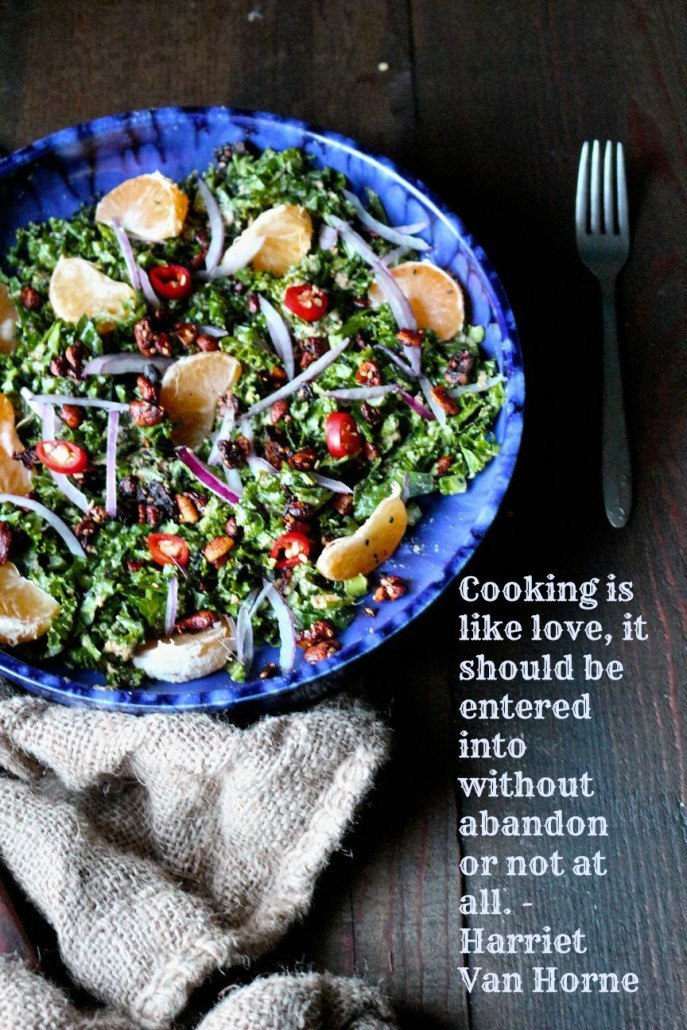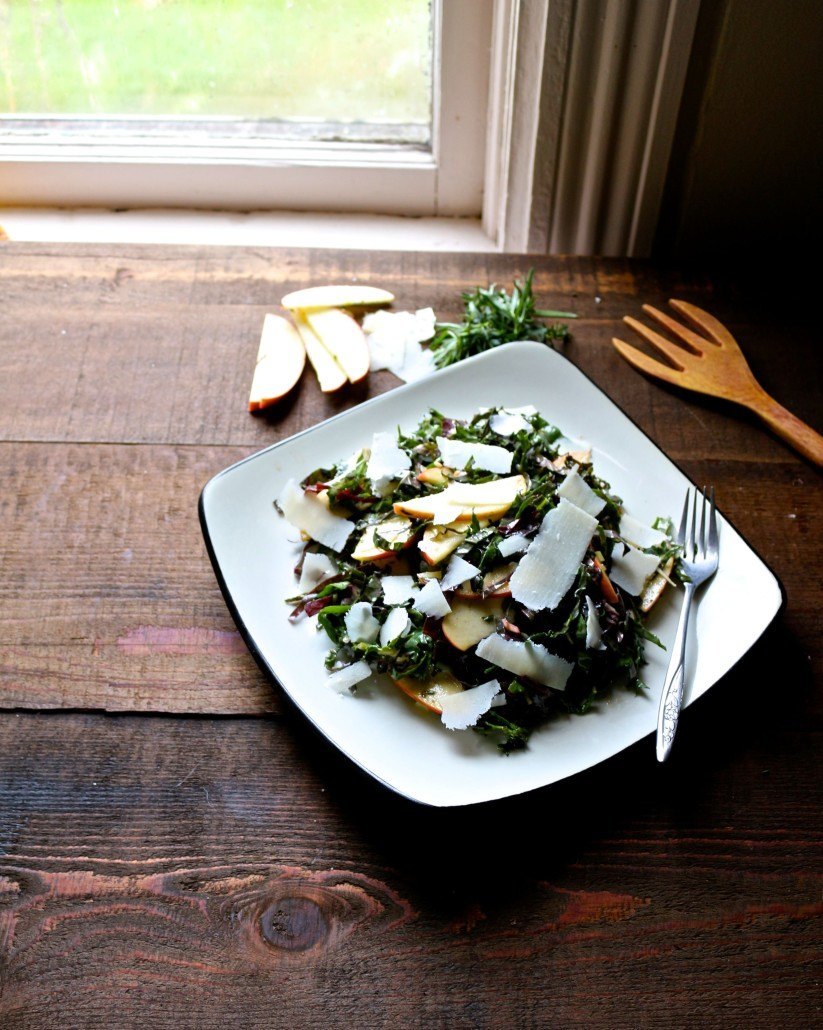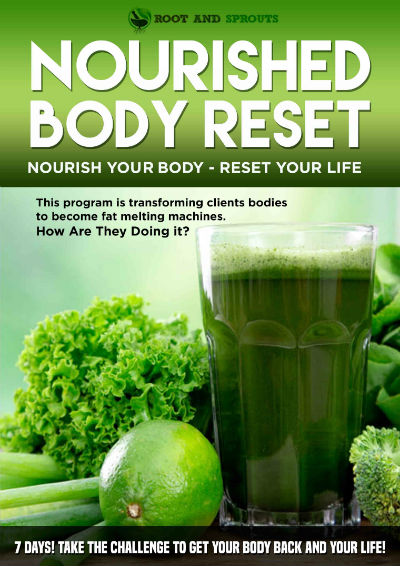This hardy green leaf has taken center stage in the health food revolution. With popular phrases like hail to the kale, and an abundance of research touting kale’s health benefits, it’s clear that kale is here to stay.
It even made the list of trendiest foods of 2014 (1) A member of the brassica family, kale shares genetic heritage with broccoli, cauliflower, brussels sprouts, cabbage and collards.
Kale was the most common vegetable in Europe until the middle ages (2). Folks were encouraged to grow kale during WW2 as it provided important nutrients and was so easy to grow.
Consumed all over the world, every region with a different culinary take, kale is ubiquitous as it’s grows in abundance and is highly nutritious. Traditionally, many cultures consume kale with potatoes and sausage.
Good news for vegetarians and vegans, kale is actually a superfood, as it contains all the essential amino acids, along with nine non essential ones (3).
A perfect protein that also brings copious other benefits along for the ride. Very few vegetables contain this impressive amino acid structure.
Typically humans rely mostly on animal sources for their protein, which require far more energy to digest than kale and other superfoods.
The literal meaning of the word superfood is a food which contains all essential amino acids and has exceptional nutritional properties, and kale certainly fits the bill.
The Wonderful Benefits of Kale
Alkalizing
The standard american diet (SAD) is highly acidic, and disease thrives in an acidic environment. The more dark magnesium rich leafy greens we consume the more alkaline our bodies will be and our capacity to fight off illness just skyrockets (4).
Kale is a highly alkaline plant which helps to rebalance the acid-alkaline balance when consumed in abundance. People with plant based diets typically have no trouble maintaining this balance, it’s how our ancestors ate for millennia (5).
The recent shift to an overabundance of acidic foods has resulted in modern diseases like diabetes and obesity skyrocketing.
Detoxifying
Not only does kales fibrous nature helps to move things along, its capacity to detoxify goes even deeper than that. Studies show kale to sulforaphane, a phytochemical in kale can rapidly detoxify polluntants (6).
While kales green goodness nourishes and strengthens our cells, its high sulforaphane content helps to induce our livers main detoxification enzyme, glutathione (7).
Isothyocyanates (ICTs) are compounds rich in kale which help our bodies to detoxify and support both phase one and two of the detoxification process. This is important in a world bogged down with environmental pollutants.
Anti-inflammatory
A bountiful plant source of omega 3 fatty acids (8), the unique structure of kale is immune strengthening and helps relieve inflammation.
Inflammation is at the root of every disease, if we can tame the inflammatory response we can initiate deep healing. An overly acidic diet is another cause of inflammation in the body, the chlorophyll rich plant medicine in kale is completely alkaline and helps to nullify inflammation.
Vitalizing Kale Power Smoothie
Antioxidants From Kale
High in an array of free radical fighting antioxidants, its hard to even know where to start with kale. The wide array of vitamins and high levels of sulforaphane makes it a top choice to fight against aging.
Protection from pollutants and amazing for the skin, sulforaphane is a well studied phytochemical whose antioxidant properties are far reaching (9).
Over forty-five different flavonoids have been identified in kale, rich in antioxidant and anti-inflammatory properties. This is a key aspect as to why kale is so adept at fighting cancer and preventing chronic inflammation.
Vitamins in Kale

Vitamin C is usually associated with citrus fruits but kale actually contains more vitamin c than oranges, about 50% of your daily allowed requirement. Skip the orange juice and reap the benefits of kale in your smoothies and juices, you’ll get a lot more out of it without the insulin spike.
Kale contains high levels of vitamin A which breaks down into beta carotene in the body, about 85% of the daily requirement for vitamin A is found a single serving of kale. This vitamin is crucial for skin, vision, immune, fetal development, and antioxidant activity (11).
Lutein is another vitamin abundant in kale, important for preventing macular degeneration. Lutein protects our eyes from damage caused by the UV radiation we’re exposed to everyday. (12)(13)
Minerals Found in Kale
You don’t need to drink milk and consume dairy to get enough calcium in your diet. In fact, kale contains more calcium per serving than whole milk. Perhaps the mass media will catch on and we’ll start seeing ‘got kale?’ ads in magazines, instead of the ubiquitous, ‘got milk?’
Most brassicas are very high in calcium and kale in particular has a high absorption rate thanks to its lower levels of oxalates (14).
Oxalates are compounds common in brassicas which inhibit us from properly absorbing the minerals in a food.
Your source of calcium (or anything really) is only as good as your absorption of it. Statistically, most people are experiencing a large excess of elemental calcium which is difficult to absorb.
The calcium which commonly fortifies processed foodstuffs and commercial dairy isn’t exactly bioavailable.
In order to absorb calcium, our bodies need adequate magnesium, and though many common foods have added calcium, they don’t have the additional magnesium to make up for it. Not that it would matter much as the absorption of a substance decreases greatly when removed from its whole food form.
Magnesium is deficient in 2 out of 3 Americans, a shocking statistic since this mineral is of such vital importance (15). The problem which arises is an excess of calcium with too little magnesium.
The results are high levels of increased risk of heart attack (16), soreness and joint inflammation (17), poor digestion, typically constipation and difficulty sleeping at night.
All these issues can be resolved when a person regulates their magnesium vs. calcium consumption (18). Foods like kale offer a balance between the two so that we can harness the benefits.
Kale is Good for the heart
Freshly juiced kale has been shown to drastically reduce high cholesterol and the likelihood of developing coronary artery disease in men (19).
Kale contains alpha-linoleic acid, a type of omega-3 which has been shown to reduce heart attacks and heart disease, even more than fish oil based omega-3 sources (20).
Steamed kale also enhances bile acid sequestrants which help to lower cholesterol.
Kale Contains Indole-3-carbinol
I3C is a phytochemical present in brassicas. I3C has the ability to protect the body from estrogen enhanced cancers such as breast cancer, endometrial and cervical (21).
In a world absolutely overloaded with sources xenoestrogens from environmental pollution, plastics and growth hormones added to the meat we eat, these types of cancers are on the rise.
Breast cancer now affects 1 in 3 women in her lifetime. How easy would it be to incorporate more foods rich in I3C to help prevent such suffering. (22)
Sulfurophane is Found in Kale
You may have stumbled on some fancy facial creams which tout sulforaphane as one of their ingredients. This phytochemical found in brassicas has antioxidant properties which last for hours after initial exposure (23).
It’s known for protecting preventing wrinkles and healing scars topically. Internally, sulforaphane has promising cancer fighting characteristics. Though the highest are found in broccoli, kale and the other brassicas also have high levels.
Science Backed Benefits of Kale with Delicious Recipes http://t.co/XVmi5zs2Tr How Has Kale Been a Benefit for You? pic.twitter.com/PcU7Rrpbrs
— RootandSprouts (@RootandSprouts) February 18, 2015
There has been a lot of research done on sulforaphane, everything from protect against environmental toxins, this substance has huge implications in finding a way to treat breast cancer as it inhibits proliferation of breast cancer cells (24), and regulates estrogen receptors in breast cancer cells which may inhibit growth.
It appears sulforaphane has and affinity for protecting reproductive systems as it also inhibits ovarian cancer cell production (25).
The cancer fighting doesn’t stop there, studies have been done of sulforaphanes ability to inhibit prostate cancer, pancreatic cancer (26) and brain cancer (27).
It’s also been shown to protect the brain cells from oxidative stress (28). These brain protective properties have even been hypothesized as a potential treatment for parkinson’s disease (29).
This is really just the tip of the iceberg, sulforphane is fast becoming a potential alternative to conventional chemotherapy or radiation.
In supplement form, this stuff is worth big bucks, but you don’t need to spend loads of money to reap the benefits, just eat lost of kale and broccoli to get a healthy serving of sulforaphane.
Potential to Protect Against Cancer
Kale is loaded with anti-cancer properties. Thanks to it’s high levels of sulforophane and important vitamins and minerals, this leaf can perhaps protect our long term good health.
One study was published which found people who consume large amounts of brassicas have lower incidence of prostate cancer (30).
This is likely due to the hormone balancing properties of indole-3-carbinol and its ability to destroy excess estrogen in the body. Kale also has a stimulatory effect on the immune system (31), kicking it into high gear to fend off foreign invaders.
Kale is rich in cancer fighting glucosinolates which help to combat oxidative stress.
How Do I Eat Kale?
There are oh so many ways to enjoy kale, it’s a versatile and adaptable vegetable which pairs well with most other foods. No longer does kale have to simply be the green adornment underneath the “real food” at all you can eat buffets.
Kale is about taking back the spotlight, there certainly aren’t many foods which I could write an entire article on. You can fry it, steam it, sauté, add it to soups and stews, puree it, juice it, make kale wraps, kale chips, the list of possibilities goes on and on.
Kale in Green Smoothies and Juicing
If your not into eating kale salads every day and you want to drink your nutrition, try adding kale to your smoothies. Those of us with digestive issues may want to give the system a break and steam the kale first.
A handy trick is to chop your steamed or raw kale, freeze it in ice cube trays and store in a bag in the freezer. This way you can just throw a few cubes into your smoothie and be on your way. Kale is incredibly hardy and filling, making it a great addition to your morning shakes.
Another method for getting a lot of this superfood into your diet is to juice it. For anyone fighting cancer or on a cleansing protocol, juiced kale takes the digestive burden off and delivers the amaze, full enzymatic benefits.
Juiced with an apple, cucumber and ginger, this is a great refresher and perfect energy pick me up.
How to Cook or Steam Kale
Since kale is such a fibrous plant, some people can have trouble digesting it well. Anyone whose experiencing leaky gut, IBS or any autoimmune disorder would probably be best to steam kale before consuming. The benefits in kale aren’t lost in the steaming process but it does make digestion a lot easier.
Eating Kale Raw
When consumed raw, we get the benefits from the natural enzymes present in the kale. For anyone who doesn’t have autoimmune problems, raw kale shouldn’t be a worry. I especially like massaged kale, as it helps to soften the leaves and make a kale salad all the more palatable.
The naturally occurring enzymes present in raw food help to improve digestion and boost energy levels. That’s why juicing and smoothies are such an effective way to cleanse and energize. Kale salads are delicious and so filling, the great thing about kale compared to lettuce is that its sturdy and doesn’t easily wilt or go soggy. There are plenty of variations, but here’s a few of my favorites.
The Best Kale Recipes
Mandarin Kale Salad with Ginger Sunshine Sauce
Serves: 4
Ingredients
•1 bunch kale, finely chopped
•1-2 mandarin oranges
•¼ of a red onion, finely sliced
•½ a red chile, finely sliced (optional)
•handful thai lime and chile cashews
•¼ C roasted sunflower seeds
•1 Tbs lime juice
•1 Tbs rice wine vinegar
•1 tsp toasted sesame oil
•1 Tbs olive oil
•1 inch piece of ginger, grated or finely chopped
•1 clove garlic, minced
•½ tsp sea salt
•1 Tbs coconut sugar
Instructions
1.Combine kale, mandarins and onion in a large bowl and set aside.
2.In a blender combine the sunflower seeds, lime, rice wine vinegar, sesame oil, olive oil, ginger, garlic, salt and coconut sugar until smooth and creamy.
3.Coat the kale with ginger sunshine sauce and toss with cashews or additional sunflower seeds and sliced red chile (optional)
Apple Kale Salad with Tarragon Mustard Vinaigrette
Ingredients
•1 bunch kale, thinly chopped
•1 honey crisp apple, thinly sliced
•½ C parmesan cheese, shaved or grated
•1 clove garlic, minced
•4 Tbs olive oil
•2 Tbs lemon juice
•1 Tbs tarragon, chopped
•1 tsp dijon mustard
•1 tsp worchester or fish sauce
•1 Tbs organic sour cream
•½ tsp sea salt
•fresh cracked pepper
Instructions
1.Combine olive oil, lemon,tarragon,dijon,worcester, sour cream, salt and pepper in a jar and shake well to emulsify.
2.Toss kale and apple until every leaf is saturated with yummy dressing and top with parmesan
Kale Juice Recipe
Kale Green Detox Juice
1/2 bunch of kale
1 green apple
1 cucumber
1 handful cilantro
1 lemon
1 inch piece ginger
Push all ingredients through a juicer, stir and enjoy
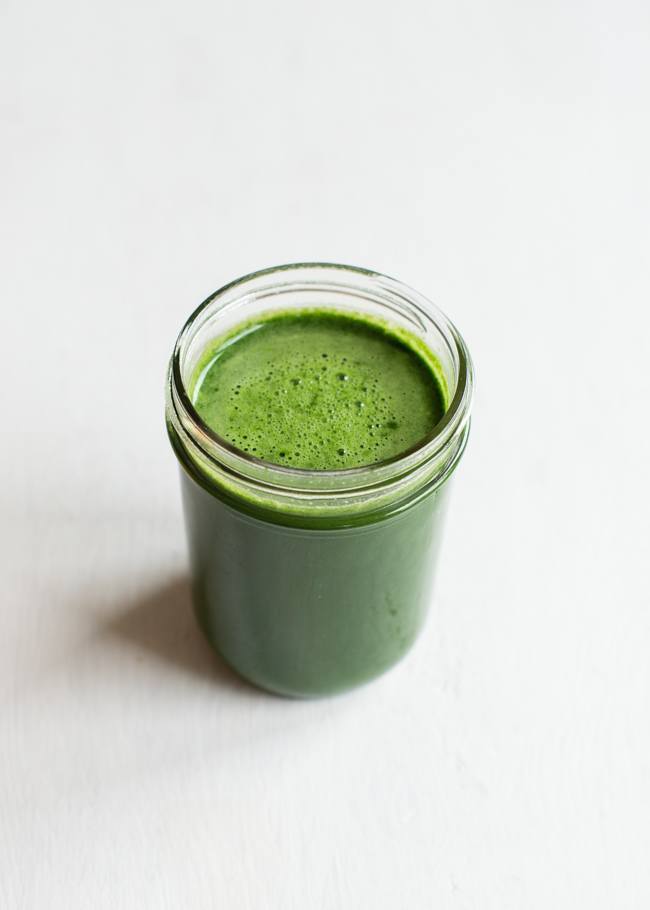



























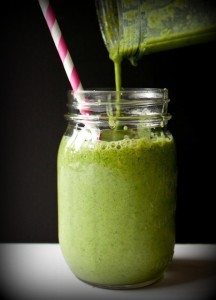 1 C kale, chopped
1 C kale, chopped